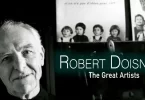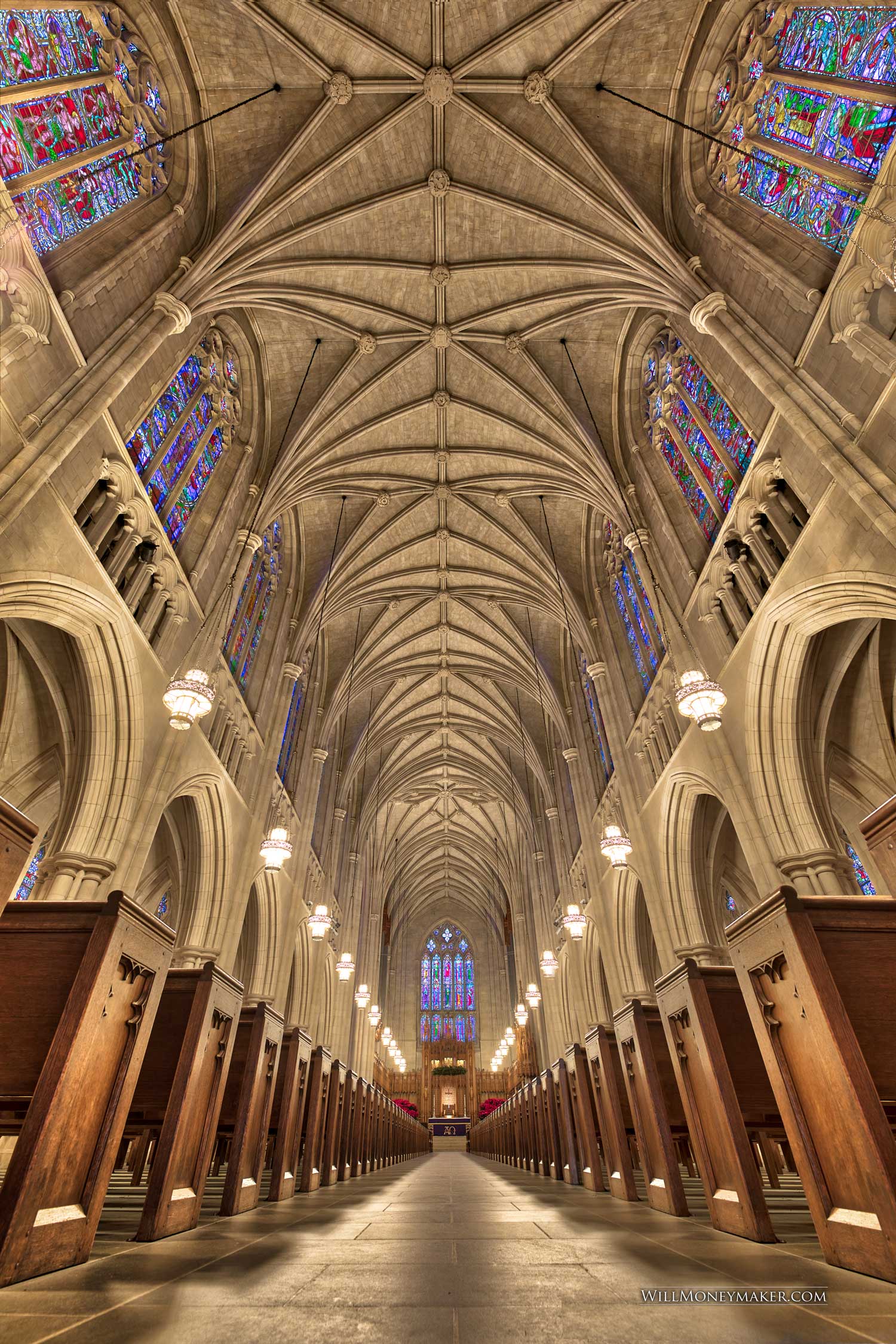Much of Vivian Maier’s life is shrouded in mystery. What we know of her paints a picture of diversity and unique thinking that led to some of the world’s finest street photography. Hers is a tale of a lifetime of creating photographs that led to a posthumous discovery. The details of her life are every bit as fascinating as her photography. Keep reading if you’d like to learn the story!
The Life of Vivian Maier
Vivian Maier’s life is something of a mystery, with quite a few unanswered questions surrounding her. We know she was born in New York City in 1926, and she was of French and Austrian descent. Her mother was French — Maria Jaussaud Justin. Her father was Austrian, Charles Maier, though he sometimes went by the name “Wilhelm.”
Throughout her childhood, Maier spent a lot of time bouncing around between countries. At times, she lived in the U.S., and at other times, she and her mother retreated to a French Alpine village, Saint-Bonnet-en-Champsaur, which was close to where her mother’s relatives lived. As to Maier’s father, he separated from the family sometime during or before 1930, though no one knows the reasons for this.
Census records, however, show that Maier’s family had a new head of the household by 1930. This would have been Jeanne Bertrand, who was a successful photographer, and who knew Gertrude Vanderbilt Whitney — the founder of the Whitney Museum of American Art.
With all of this, one could say that Maier was born with photography in her blood. She was exposed to it from a very young age. No one knows for sure, but this could have been a big part of what drove her to become a photographer later in life.
Several years later, in 1935, Maier was back in New York — and census records show that her father was back with the family. By this time, she had a sibling, too, Charles Jr., who would have been Maria and Charles’ son.
Though Maier had early photographic influences, she never was a career photographer. Instead, her life’s work mostly involved caretaking. By 1951, when she was 25 years old, Maier was back in New York, having recently returned from France. At this point, she was working in a sweatshop. From there, she moved to Chicago’s North Shore, where she became a nanny. She’d continue in this position for 40 years.
Her first 17 years in Chicago saw her working for two different families. Between 1956 and 1972, she was with the Gensburg family, and between 1967 and 1973, the Raymonds. This is perhaps the most fascinating part of Maier’s history because depending on the source, it seems some of the families Maier worked for truly loved her. The Gensburgs went so far as to compare Maier to a famous movie icon: “She was like a real, live Mary Poppins.” Others, though, were a bit more conflicted. One of the interesting things about Maier is that she often presented herself very differently to different people. Some found her warm, welcoming, positive, and inspiring, while to others, she came across as intimidating or frightening. Maier would even go so far as to use different names, accents, or tell different stories about her life.
During her time as a nanny, Maier’s clients characterized her as a very private person, someone who would spend her days off roaming the streets of Chicago. This was where the photography happened. Whenever Maier had the chance, she was out and about, often with a Rolleiflex camera.
One quote from this period in her life sums up Maier succinctly. This comes from John Maloof, who curates some of Maier’s photography:
“She was a socialist, a feminist, a movie critic, and a tell-it-like-it-is type of person. She learned English by going to theaters, which she loved. She was constantly taking pictures, which she didn’t show anyone.”
Vivian Maier’s Rise to Prominence
The above quote sums up Maier’s diversity as a person — and that diversity is how she approached photography. First, there were the years spent as a nanny during which she’d spend her free time exploring Chicago. In 1959 and 1960, Maier took off on around the world trip where she had the opportunity to photograph in Italy, Shanghai, Beijing, India, Syria, Egypt, and Los Angeles.
At one point in 1970, Maier even worked for famous talk show host Phil Donahue as a housekeeper. During this period in her life, she kept a collection of belongings stored in boxes at various employers’ homes. In one such residence, there were two hundred boxes, almost all of it either photographs or negatives. Other collections at other residences included newspapers, which were described as “shoulder-high piles.” And she also had a collection of audiotapes. These were recordings of conversations with the people she photographed — a unique take on getting to know your subject material!
What’s interesting about all of this is that for a long time, Vivian Maier’s photography was completely unknown, just something she did for her own reasons. At the same time, her life was a troubled one, particularly in later years when she seriously struggled with finances. In her elderly years, she was destitute, to the point that the Gensburg brothers who she had cared for as children offered to help her financially, even going so far as to arrange an apartment for her in Chicago when she was on the verge of eviction.
These money troubles are what led to her discovery. She was unable to make the payments on a storage space she’d been renting in Chicago, so in 2007, the contents of that storage space were auctioned. This included negatives, prints, 8mm film, and recordings. John Maloof, Ron Slattery, and Randy Prow, all three photographic collectors, bought some of her work and published it online.
In 2008, Maier suffered an injury — a fall in which she hit her head. She never recovered from this, and in January 2009, she was placed in a Chicago nursing home, where she passed away on April 21, 2009.
Despite this, Maier’s photography continued to grow as more and more people took interest in it. In the years after her death, Maier’s work went from obscurity to international fame. By 2010, Jeffrey Goldstein, a prominent art collector, purchased some of the collection. Over the years, he added on to his collection of Maier prints and negatives, and in December 2014, he sold the collection to Toronto’s Stephen Bulger Gallery.
Today, the bulk of Maier’s work is owned by John Maloof, one of the original buyers, and who now runs what is called the Maloof Collection. Estimates say he has at least 90% of Maier’s total body of work, which includes not only prints, but recordings, rolls of film, movies, and more.
Currently, ownership of Maier’s work is under legal challenge, too. Lawyer David C. Deal argues that Maier’s heirs, which include a cousin in France, own the copyrights to Maier’s work, and thus are entitled to a portion of the proceeds from the sale of her work.
The Photography of Vivian Maier
Maier’s photography is what’s known as “street photography.” It’s a photographic genre that strives to depict everyday life as people go on about their business — usually made up of intimate candid shots as if to show people in their undisturbed habitat.
This is especially true of Maier’s work. When you look through what she produced, you’ll see a few common themes. Wealthy people dressed in finery abound, and they stand as an interesting contrast to people from other groups and classes. There are also plenty of images showing children getting dirty as they play, laborers at work, or unfortunate members of society doing what is needed to get through the day. Architecture is another prominent theme, often buildings in various stages of demolition.
What’s most striking about Maier’s portfolio is the dynamism. In studying Maier’s work, it’s immediately apparent that she had a gift for capturing life as it really is. One image after the next, they are all incredibly natural and gripping, as if Maier was no more than an observer. This is street photography at its finest — an honest documentation of all walks of life without the interference of the photographer. Truly, Vivian Maier’s work is an inspiration for all of us. She had an incredibly keen photographic eye, one capable seeing in ways most of us don’t often see as we go about our day to day business. If this type of photography interests you, her work is definitely something you should study!



